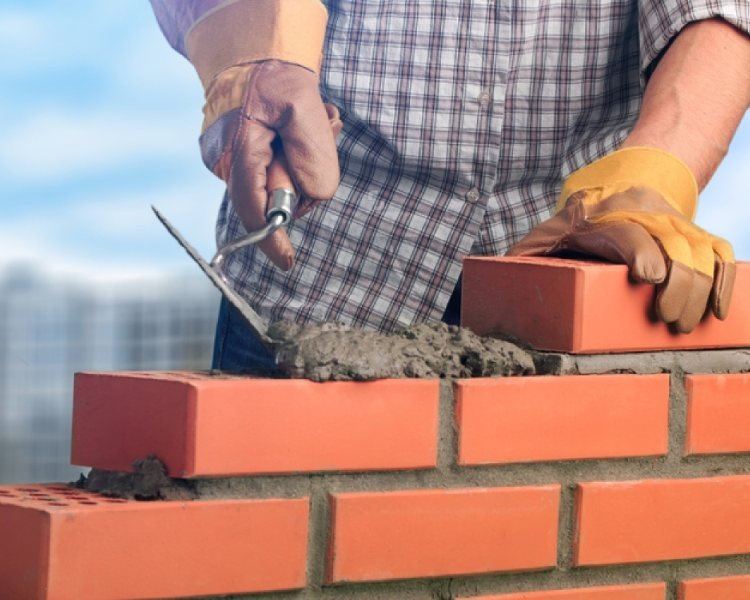Chimney Flashing and Cap Repair: Shield Your Home from Components
Chimney Flashing and Cap Repair: Shield Your Home from Components
Blog Article
Unlocking the Tricks of Lasting Stonework Building Practices for Eco-Friendly Buildings
Amongst the myriad approaches to environment-friendly structure, sustainable stonework building and construction stands out as a time-tested and durable technique that holds a wide range of untapped capacity. From the selection of products to innovative building techniques, the secrets to accomplishing sustainability within stonework construction are multifaceted and appealing.
Benefits of Sustainable Stonework Building
Embracing lasting masonry building and construction techniques not just decreases environmental influence yet likewise provides lasting financial benefits to contractors and communities. By making use of products like recycled bricks, blocks, and stones, builders can significantly lower the carbon impact of their tasks while advertising source effectiveness. Furthermore, sustainable masonry building techniques, such as proper insulation and thermal mass properties, can boost power performance within structures, bring about reduced operational costs over time.
Additionally, the longevity and strength of stonework frameworks add to long-term economic advantages. Structures built using lasting masonry techniques typically call for much less maintenance and repair service, translating to set you back financial savings for home builders and residential property proprietors. The long life of masonry products also makes sure that frameworks stay secure and secure, minimizing the demand for regular renovations or replacements.
Eco-Friendly Stonework Materials
Utilizing environmentally friendly masonry products is an essential step towards improving the sustainability of building and construction methods and lessening environmental effect while taking full advantage of long-term financial benefits. Sustainable stonework materials are sourced, generated, and used in a manner that minimizes overall ecological effect. Lasting concrete obstructs integrate recycled aggregates and might feature enhanced insulation residential properties, contributing to power efficiency in buildings.
In addition, natural products like adobe, rammed earth, and straw bales give exceptional thermal mass residential properties, decreasing the demand for heating and cooling down energy. These products are typically locally offered, advertising local economic climates and reducing transportation-related carbon discharges. By picking environmentally friendly stonework materials, construction jobs can substantially reduce their environmental impact and add to the development of much healthier, more sustainable built atmospheres.
Energy-Efficient Stonework Techniques
Power performance plays a vital function in boosting the sustainability of stonework building and construction methods. One essential energy-efficient masonry technique is the usage of thermal mass, which includes integrating dense materials like concrete or brick right into the structure's structure to take in and store heat.

Innovations in Lasting Stonework
Recent innovations in sustainable Get More Information stonework practices have actually produced cutting-edge techniques that are improving the building sector. One such advancement is the growth of self-healing concrete, which uses bacteria installed within the concrete to recover cracks autonomously. This innovation not just decreases upkeep prices yet additionally enhances the longevity of masonry structures, adding to linked here their sustainability.
An additional remarkable development is the use of recycled accumulations in masonry construction - masonry contractor. By integrating materials such as smashed ceramic waste or recycled glass right into concrete blends, contractors can minimize the environmental influence of building tasks while preserving architectural honesty. This method not just draws away waste from land fills but likewise preserves natural deposits, making it a key improvement in sustainable masonry building
In addition, the integration of digital layout devices, such as Building Information Modeling (BIM), is changing the method stonework frameworks are planned and built. BIM permits more specific estimations, decreased product wastage, and enhanced power effectiveness, inevitably bring about more sustainable building techniques. These developments collectively represent an encouraging future for sustainable stonework construction in the age of eco-friendly structures.
Future Trends in Masonry Sustainability
With the ingenious strides made in sustainable stonework practices, the future fads in stonework sustainability are positioned to more change the construction market. One of the essential trends shaping the future of masonry sustainability is the increased combination of technology. Developments such as Structure Info Modeling (BIM) and virtual fact simulations are being made use of to maximize stonework building and construction procedures, causing decreased product waste and boosted energy effectiveness in structures.
Additionally, the development of novel lasting materials is set to play a substantial duty in improving the eco-friendliness of masonry construction. masonry contractor. Innovations like visit this page self-healing concrete, recycled accumulations, and bio-based binders are obtaining grip for their ability to minimize ecological influence while preserving structural integrity

Conclusion
To conclude, lasting stonework construction methods provide many advantages for eco-friendly buildings. By making use of eco-friendly materials and energy-efficient techniques, stonework can add to a much more sustainable built setting. Technologies in lasting stonework are continually being established to further enhance the environmental performance of buildings. Looking in the direction of the future, the fad of stonework sustainability is anticipated to grow, resulting in more ecologically friendly and energy-efficient construction methods in the years to come.
Report this page